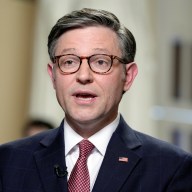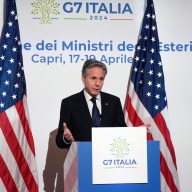TOKYO – A magnitude-7.4 aftershock rattled Japan on Thursday night, knocking out power across a large swath of the northern part of the country nearly a month after the devastating earthquake and tsunami that flattened the northeastern coast.
Japan’s meteorological agency issued a tsunami warning but cancelled it about 90 minutes later. Officials said power was out in all of three northern prefectures (states) and in parts of two others.
There were no immediate reports of serious injuries or damage. The aftershock was the strongest since the March 11 megaquake and tsunami that killed some 25,000 people, tore apart hundreds of thousands of homes and caused an ongoing crisis at a nuclear power plant.
The operator of the tsunami-ravaged Fukushima Dai-ichi nuclear plant said there was no immediate sign of new problems caused by the aftershock, and Japan’s nuclear safety agency says workers there retreated to a quake-resistant shelter in the complex. None were injured. The crisis there started when the tsunami knocked out cooling systems. Workers have not been able to restore them.
Thursday’s quake knocked out several power lines at the Onagawa nuclear power plant north of Sendai, which has been shut down since the tsunami. One remaining line was supplying power to the plant and radiation monitoring devices detected no abnormalities. The plant’s spent fuel pools briefly lost cooling capacity but an emergency diesel generator quickly kicked in.
Officials said the aftershock hit 30 miles (50 kilometres) under the water and off the coast of Miyagi prefecture. The U.S. Geological Survey in Golden, Colo., later downgraded it to 7.1.
Buildings as far away as Tokyo shook for about a minute.
The quake struck at 11:32 p.m. local time. Moments beforehand, residents in the western Tokyo suburb of Fuchu were warned on a neighbourhood public address system of an imminent quake.
In Ichinoseki, inland from Japan’s eastern coast, buildings shook violently, knocking items from shelves and toppling furniture, but there was no heavy damage to the buildings themselves. Immediately after the quake, all power was cut. The city went dark, but cars drove around normally and people assembled in the streets despite the late hour.
Prime Minister Naoto Kan huddled with staff members in his office shortly afterward, according to deputy Cabinet spokesman Noriyuki Shikata.
A separate government emergency response team met shortly after midnight to monitor any reports of damage and urged firefighters, police and other emergency personnel to aid those in need.
Paul Caruso, a geophysicist at USGS, said the quake struck at about the same location and depth as last month’s huge one.
Another USGS geophysicist, Don Blakeman, said it was the strongest aftershock since March 11, although several aftershocks on that day were bigger.
The USGS said the aftershock struck off the eastern coast 40 miles (65 kilometres) from Sendai and 70 miles (115 kilometres) from Fukushima. It was about 205 miles (330 kilometres) from Tokyo.
____
Associated Press writers Jay Alabaster in Ichinoseki, Japan; Malcolm Foster, Ryan Nakashima and Mari Yamaguchi in Tokyo and Colleen Slevin in Denver, Colorado, contributed to this report.












